Andrew M. Leifer
Fast deep learning correspondence for neuron tracking and identification in C.elegans using synthetic training
Jan 20, 2021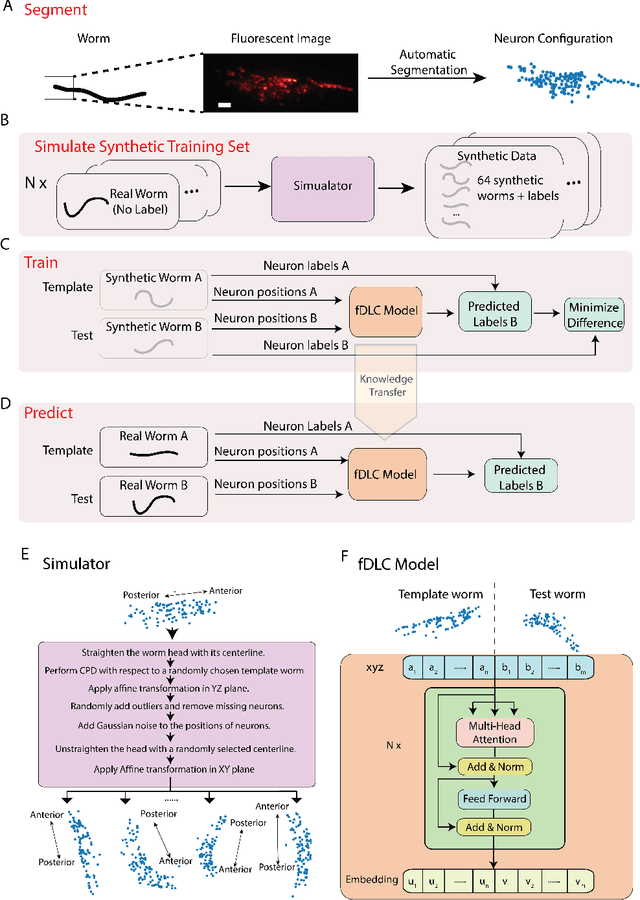
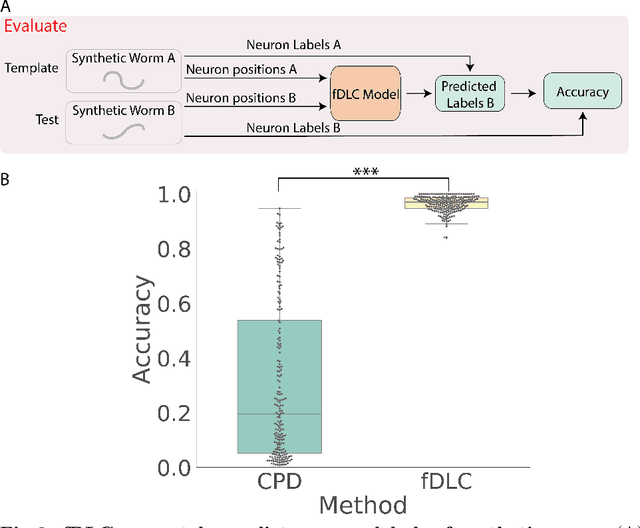
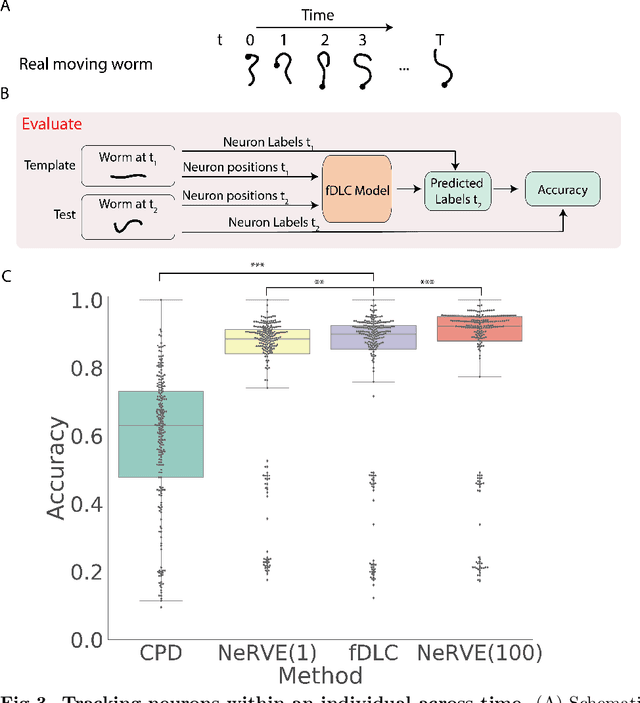
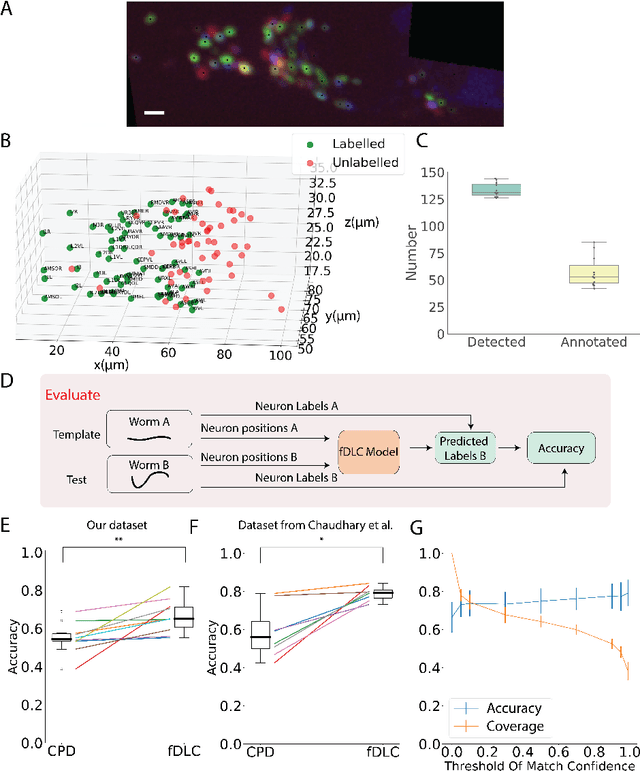
Abstract:We present an automated method to track and identify neurons in C. elegans, called "fast Deep Learning Correspondence" or fDLC, based on the transformer network architecture. The model is trained once on empirically derived synthetic data and then predicts neural correspondence across held-out real animals via transfer learning. The same pre-trained model both tracks neurons across time and identifies corresponding neurons across individuals. Performance is evaluated against hand-annotated datasets, including NeuroPAL [1]. Using only position information, the method achieves 80.0% accuracy at tracking neurons within an individual and 65.8% accuracy at identifying neurons across individuals. Accuracy is even higher on a published dataset [2]. Accuracy reaches 76.5% when using color information from NeuroPAL. Unlike previous methods, fDLC does not require straightening or transforming the animal into a canonical coordinate system. The method is fast and predicts correspondence in 10 ms making it suitable for future real-time applications.
Automatically tracking neurons in a moving and deforming brain
Oct 14, 2016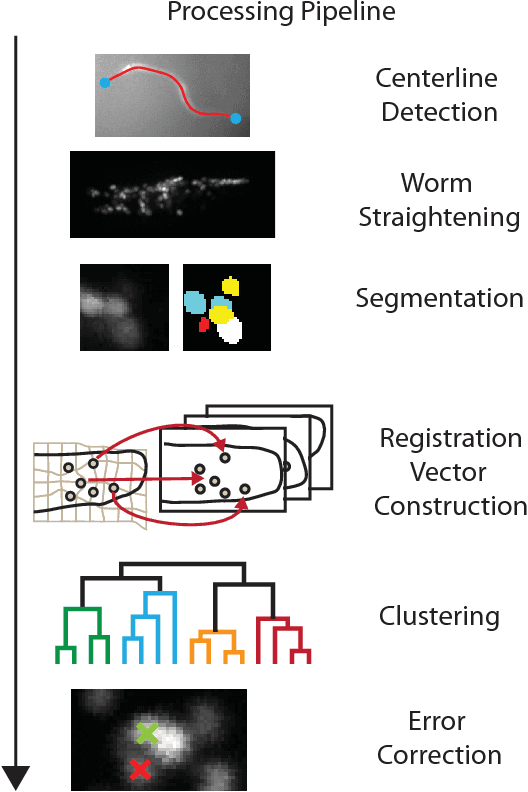
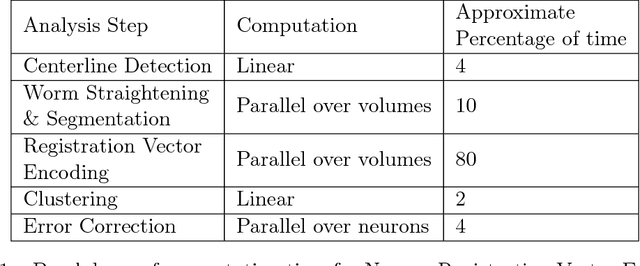
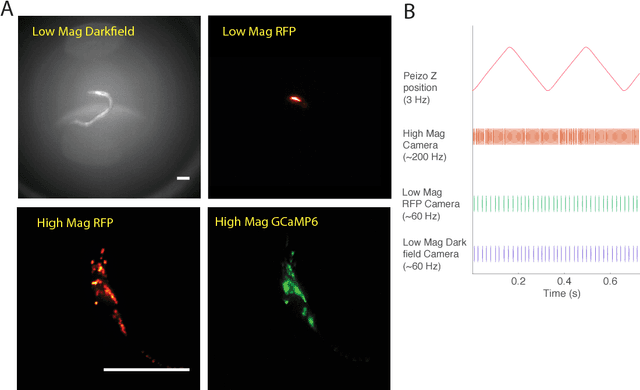
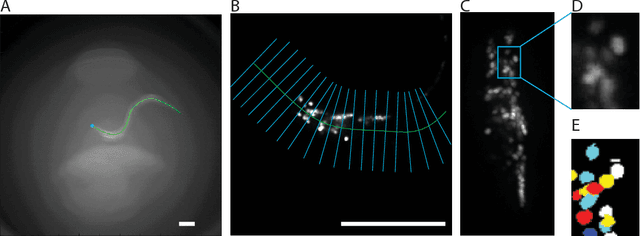
Abstract:Advances in optical neuroimaging techniques now allow neural activity to be recorded with cellular resolution in awake and behaving animals. Brain motion in these recordings pose a unique challenge. The location of individual neurons must be tracked in 3D over time to accurately extract single neuron activity traces. Recordings from small invertebrates like C. elegans are especially challenging because they undergo very large brain motion and deformation during animal movement. Here we present an automated computer vision pipeline to reliably track populations of neurons with single neuron resolution in the brain of a freely moving C. elegans undergoing large motion and deformation. 3D volumetric fluorescent images of the animal's brain are straightened, aligned and registered, and the locations of neurons in the images are found via segmentation. Each neuron is then assigned an identity using a new time-independent machine-learning approach we call Neuron Registration Vector Encoding. In this approach, non-rigid point-set registration is used to match each segmented neuron in each volume with a set of reference volumes taken from throughout the recording. The way each neuron matches with the references defines a feature vector which is clustered to assign an identity to each neuron in each volume. Finally, thin-plate spline interpolation is used to correct errors in segmentation and check consistency of assigned identities. The Neuron Registration Vector Encoding approach proposed here is uniquely well suited for tracking neurons in brains undergoing large deformations. When applied to whole-brain calcium imaging recordings in freely moving C. elegans, this analysis pipeline located 150 neurons for the duration of an 8 minute recording and consistently found more neurons more quickly than manual or semi-automated approaches.
* 33 pages, 7 figures, code available
 Add to Chrome
Add to Chrome Add to Firefox
Add to Firefox Add to Edge
Add to Edge